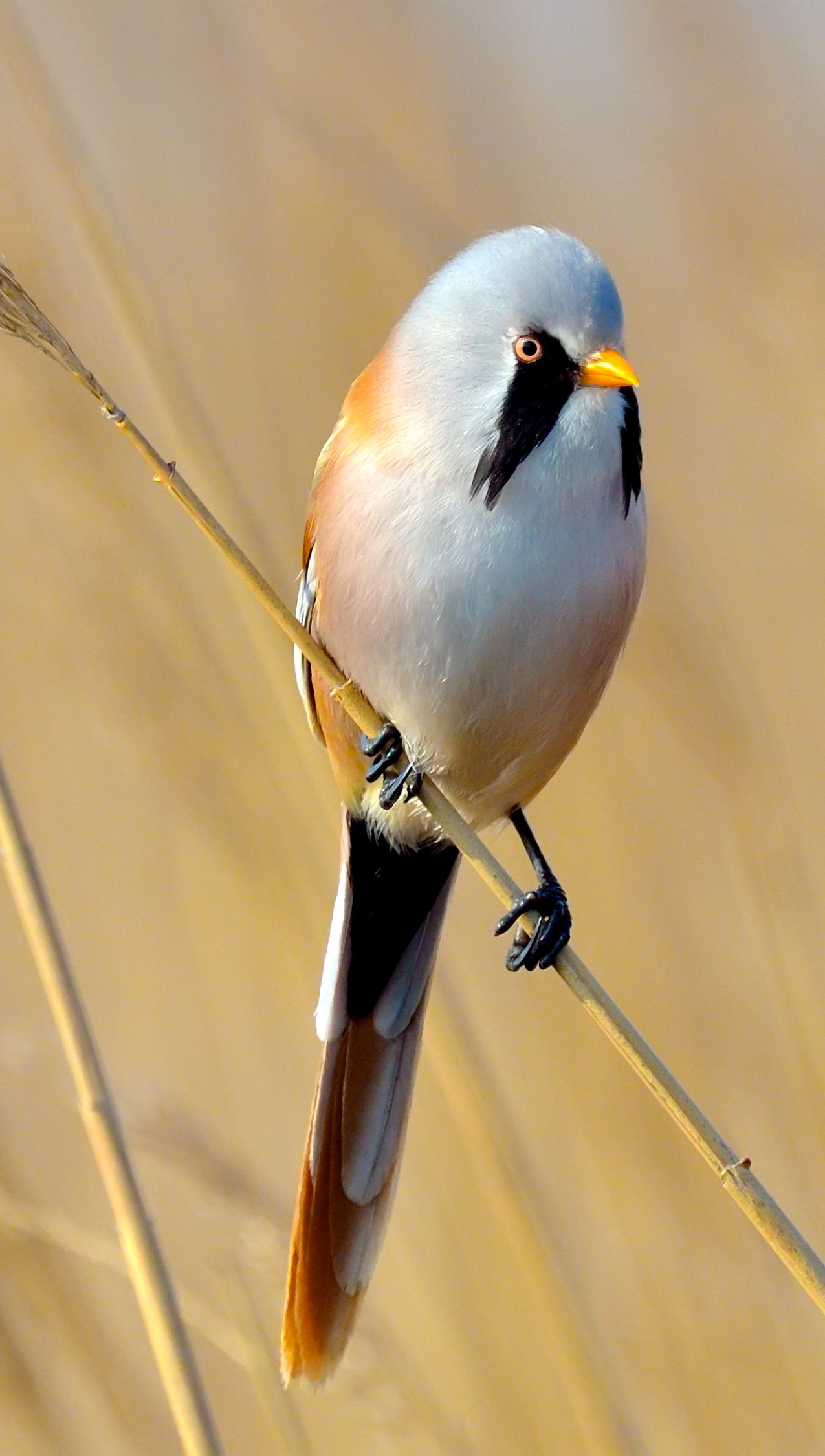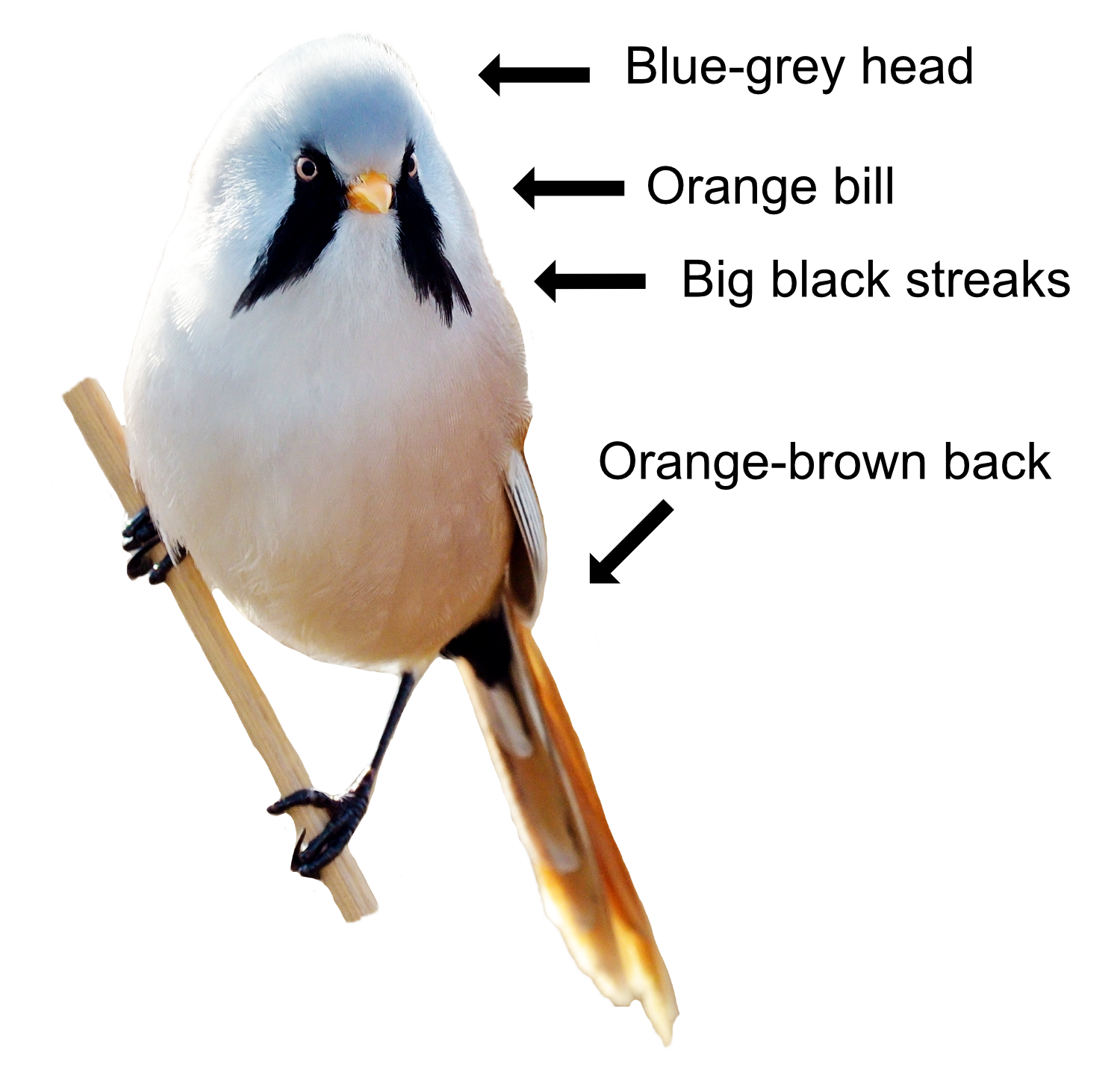
The Bearded Tit lives exclusively in dense reedbeds. It is hard to see but easy to hear with its distinctive metallic "ting ting" call. A very sociable chap, sharing his patch with lots of mates. It is another badly named bird as it isn't a Tit and doesn't have a beard.
Bearded Tits are a similar colour to dead reeds with an orange-brown body, a blue-grey head, and a droopy black patch under their eyes (like their mascara has run). They are long-tailed with a delicate wing pattern and a small orange bill. The female has a plainer head and the kids look like mum. They are usually seen flying rapidly in a looping flight across the top of a reedbed showing their white outer tail feathers.
Their main foods are insects and spiders in the summer, then switching to moss and seeds in winter when insects are scarce. Bearded Tits don't have teeth, and their bills aren't powerful enough to crack open the tough seed shells, so they have to eat grit which helps them grind the hard seeds into a digestible pulp.

Bearded Tit breeding starts in April. Both mum and dad build the nest which is a deep cup of reed leaves and vegetation built amongst the reed stems and lined with fluffy seed heads. These guys are all about reeds. The 4-8 eggs hatch after 11 days and the youngsters can feed themselves after a week. They can fly 12 days later which gives mum and dad time to squeeze in 2-3 broods. They do their moult between June and October once all the kids have left home.
There are 700 pairs of Bearded Tits in Britain. Numbers fell because of the drainage of wetlands. Their numbers are now slowly increasing thanks to reedbed conservation. Most birds are sedentary but when numbers get large in an area, this can cause a mass 'irruption' to other areas in autumn. Bearded Tits from Holland have been known to come here to overwinter. They are very sensitive to severe winter weather and the cold winter of 1947 nearly wiped them out. The oldest recorded Bearded Tit lived for 6 years.
Their Latin name is 'panurus biarmicus' where 'panurus' is from Ancient Greek 'panu' for 'exceedingly' and 'ουρa' for 'tail', a reference to their long tail. The 'biarmicus' is from 'Bjarmaland' part of Russia where, presumably, they were first spotted. Another English name is the 'bearded reedling', which is better as they are not related to Tits but still wrong on the beard front.